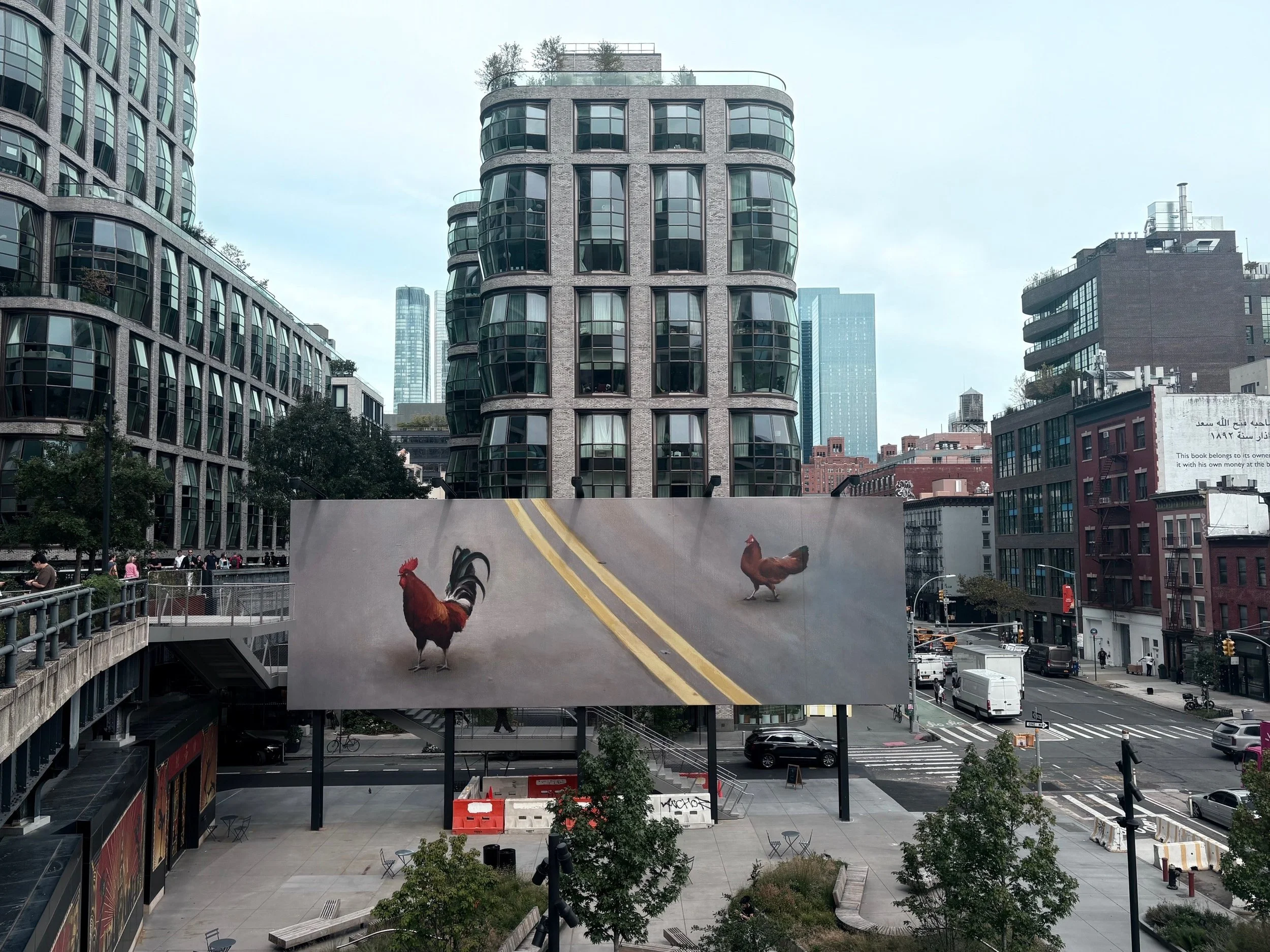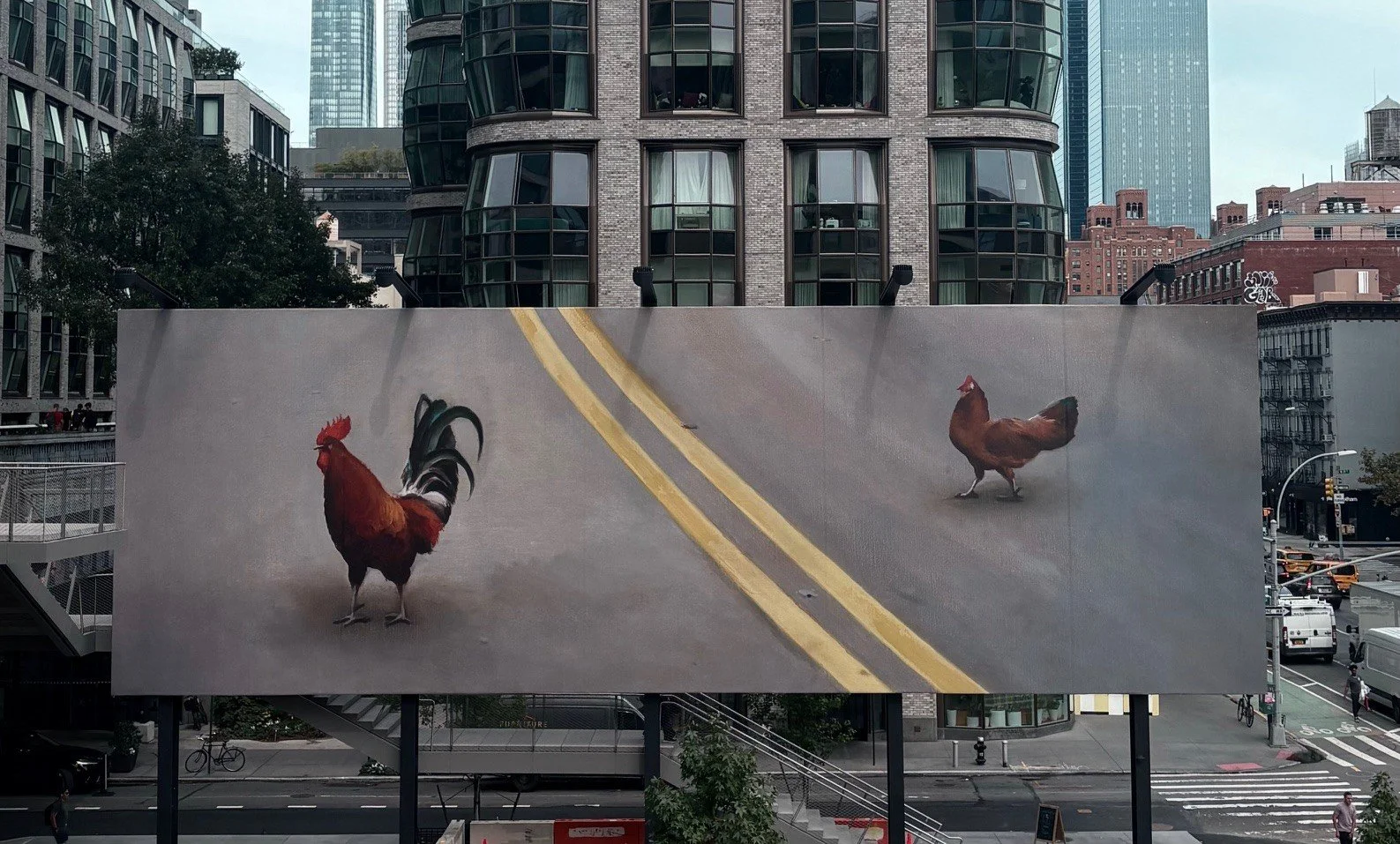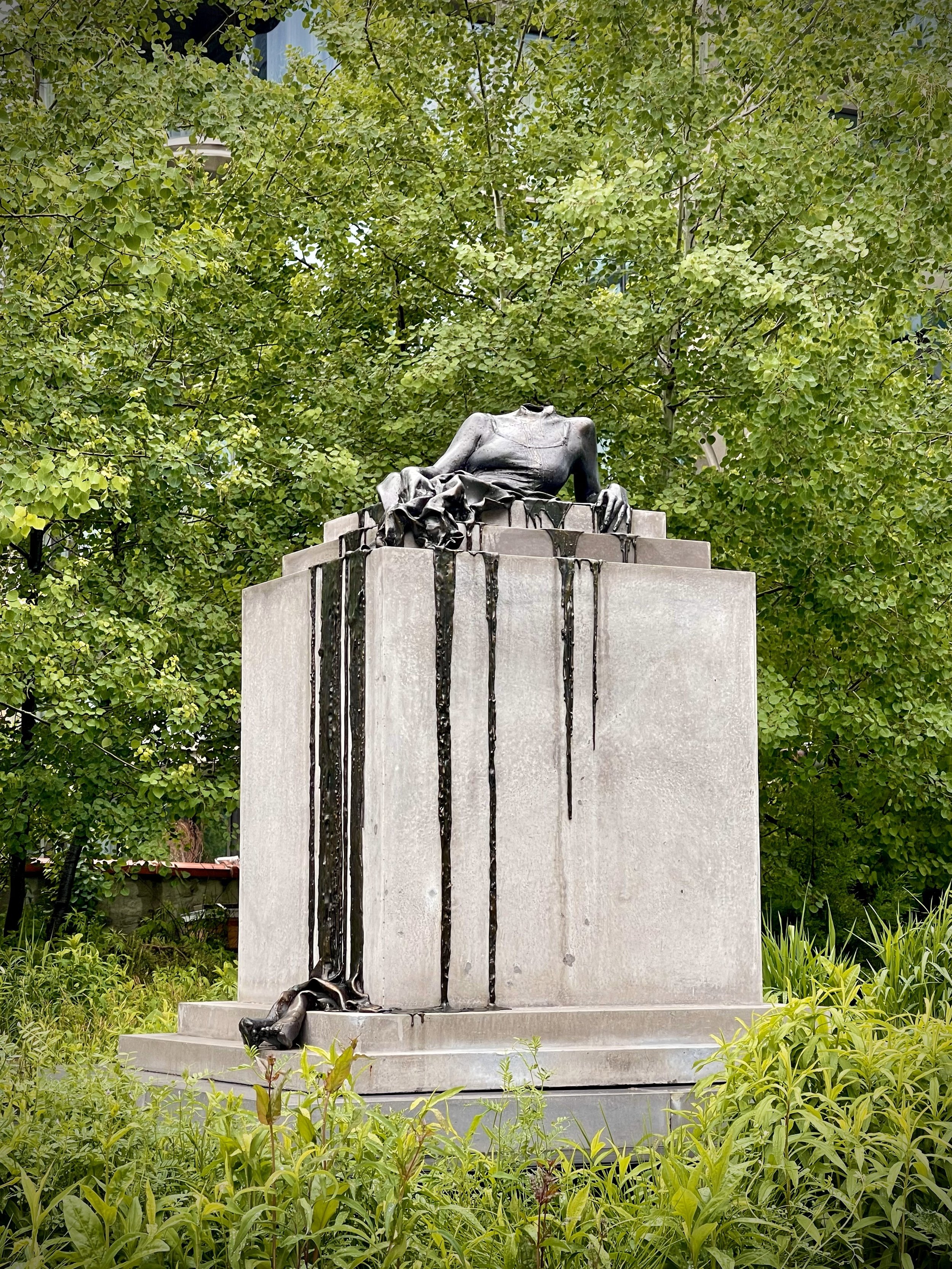As a slight chill descends on New York, we sought comfort from the changing seasons at one of our favorite places for public art, the High Line, to observe Allison Katz’s Don’t ASK. Hovering above the intersection of 18th Street and 10th Avenue, Don’t ASK features two oversized chickens mid-crosswalk, playfully referencing the classic anti-joke: “Why did the chicken cross the road?” But rather than providing an answer, the installation leans into uncertainty, highlighting possibility, anticipation, and the unknown. Katz’s piece reflects her interest in roads and transportation systems, not just as infrastructure, but as symbols of thought in motion. The road becomes a metaphor for ideas, transitions, and open-ended futures. Visually, Don’t ASK mimics the towering advertisements that define New York City’s skyline. However, instead of selling a product, it reclaims the billboard format to provoke reflection rather than consumption. In a city of constant movement and noise, Don’t ASK offers a quiet interruption, a thoughtful invitation to pause, consider, and embrace not knowing.
“Don’t ASK” by Allison Katz



















